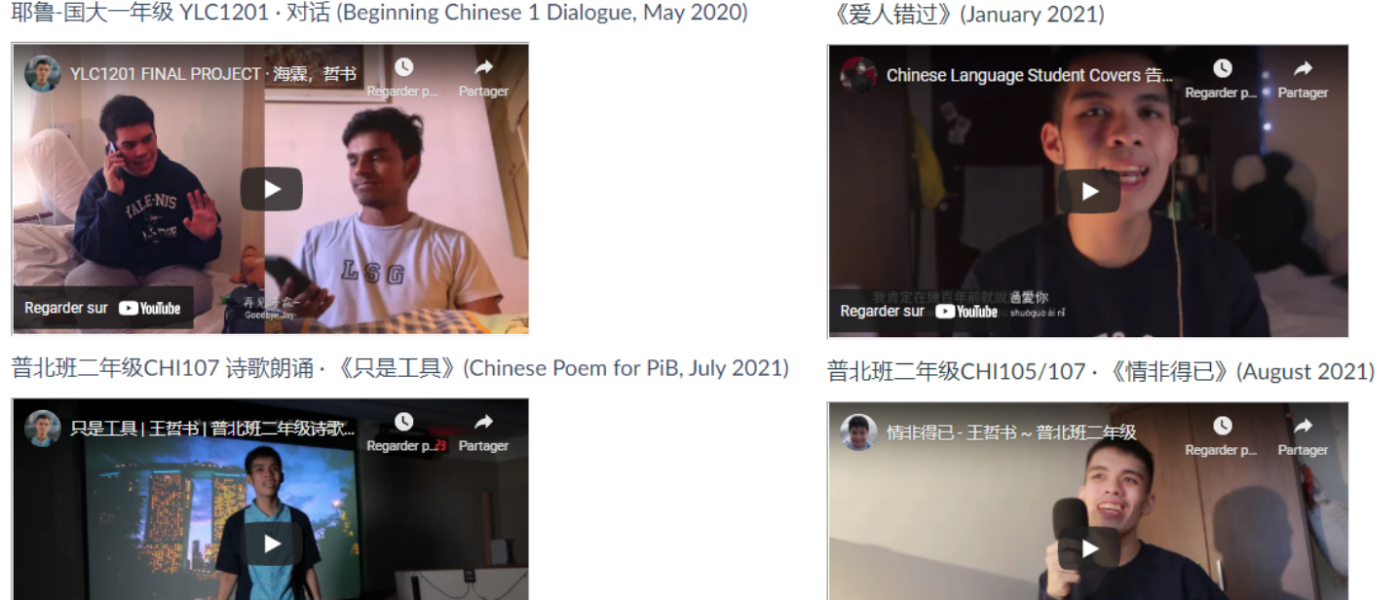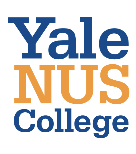Promoting Students’ Self-Reflexivity and Motivation in Language Learning via Language Dossiers
By Matthew Ling and Eduardo Lage-Otero, Yale-NUS College


DOI: https://www.doi.org/10.69732/NJPQ7999
For the past two years and thanks to a Teaching Enhancement Grant from the National University of Singapore, language students at Yale-NUS College (a liberal arts college in Singapore which was established in 2011 as a collaboration between Yale University and the National University of Singapore) have worked with an online language portfolio based on the European Language Portfolio (ELP) model. The ELP is a well-established set of tools to help students document, evaluate, and reflect upon the work they are doing with a new language in line with the Common European Framework of Reference (CEFR). We built our localized version of the ELP on the Canvas Learning Management System (LMS) and emphasized the Language Portfolio modular structure so that students could engage with its core components (see Table 1) at different times and for specific purposes.
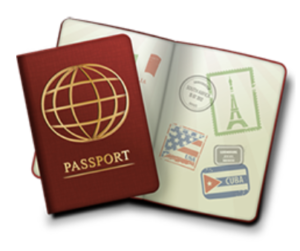 |
Language Passport | This area allows students to give evidence of their language skills, qualifications, and experiences. This includes building a profile of their skills, language experiences, and certificates. |
 |
Language Biography | This section helps students with planning, reflecting, and mapping their language learning process, including reflecting on their language background, goal setting, strategies & skills, and intercultural experiences. |
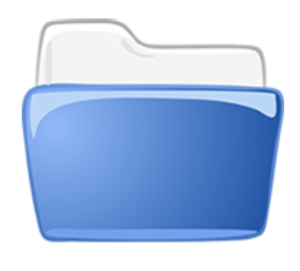 |
Language Dossier | This tool allows students to create a repository of language-related work as they take language courses, obtain certificates, use their new language for an internship, or have other meaningful relevant experiences. |
Table 1 – Language Portfolio Core Elements
Thanks to this approach, our language students regularly submit a copy of their language passport in PDF format at the beginning of a language course, when they apply for a language scholarship, an internship, or to become language peer tutors. They also set short and long-term goals during the semester and regularly write posts in their intercultural journals. In addition to this, they build a Language Dossier with representative work from their language courses across multiple semesters, language-related activities around campus, and during their stay abroad. One of the goals of the Language Portfolio is to help students reflect upon and make connections across these diverse language experiences and motivate them to reach more advanced levels of language proficiency. In this article we will focus primarily on the Language Dossier component and how we have integrated it into our language curriculum.
The Canvas LMS comes with a handy ePortfolio tool (see Picture 1) that we used for the Language Dossier component (we know! using an ePortfolio within a language portfolio is very meta). Although fairly basic and lacking in features, the Canvas ePortfolio provides a blank space or canvas (pun intended) for students to build an organized repository of their work in language classes and design their Language Dossier however they like. This freedom came with risks as well and it was soon clear that more guidance and documentation were needed.
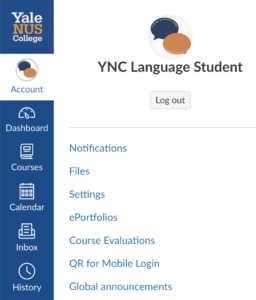
Students and instructors are unfamiliar with the Canvas ePortfolio feature because it sits outside of any specific Canvas course shell. In fact, most instructors are simply unaware of its existence. To help students get started, we created a step-by-step guide along with a sample Dossier (see Table 2). Building this sample dossier allowed us to address some of the challenges students were likely to encounter when designing and creating their own. From basic steps like how to upload or embed videos or enable comments on a page, to more advanced issues like structuring the information on their Dossier and creating a meaningful navigational menu. We included a number of key experiences available to our students including taking language courses, participating in a language table, attending cultural events, spending a summer or semester abroad, becoming a language peer tutor, and gaining work-related language experience via internships.
| Language Portfolio Dossier – Spanish |
¡Bienvenido a mi Dossier de español!
|
Work |
Level |
Date |
| Europass CV/Cover Letter | B2 | 2020 |
| Interview with a Spanish Embassy Official in Singapore | B1 | 2019 |
| Internship at the United Nations | B2 | Summer 2019 |
| Experience summer abroad in Buenos Aires | B1 | Summer 2018 |
| Spanish poem published in Yale-NUS multilingual magazine Tònes | A2 | 2018 |

Table 2 – Sample Language Dossier
Through the various sections of the sample Language Dossier, we tried to emphasize how students could reflect on their learning goals and identify ways to integrate the work they did in the classroom into it. Underpinning the organization of the academic materials were the Dossier learning goals, namely:
- Narrative: building evidence of working towards long-term language goals to sustain learner engagement and facilitate autonomous planning
- Reflection: extensive self-reflection on work done to make the most out of every learning opportunity and continue to improve over time
- Presentation: presenting the learner’s language learning journey to themselves and to others in a professional manner as a way of further reflection and motivation.
In line with research on using rubrics to support reflective writing (Cheng & Chan, 2019), we found that students, without explicit guidance, generally did not engage with reflection very much and had difficulty understanding what good reflective writing looks like. To make these goals explicit to the learners and help them engage with them as they built their dossiers, we developed a self-assessment rubric (see Picture 2 – to open a larger and more accessible version of the rubric, click the link below the table). This easy-to-use tool allowed them to monitor their progress and provided them with further guidance on where to go next along these three dimensions (narrative, reflection, and presentation) after the initial Dossier set-up.

Dossier Integration into Language Instruction
Once we had all the portfolio pieces in place, we began piloting the Language Dossier within several language courses, starting with those at the beginning level. As part of this integration, students had to set short-term goals at the start of each unit and, as they submitted key course assignments, had to decide how this work would fit into their Dossier, using the rubric to continue to improve it.
At the end of the semester, students submitted a link to their Dossier as part of the course overall assessment. This approach resulted in students being more intentional in how they approached, developed, and presented their work in the target language. One student noted at the end of the term: “I view the Dossier as a place to showcase my use of the language. As I cross the beginner threshold, I’ll be able to use the language skills I’ve acquired in a better way to produce original content that attests to my familiarity with Spanish.” Another student mentioned, “I use my language dossier to reflect upon the learning strategies that have been effective for me and to document key assignments in my progress studying Spanish.” This student added how she had been keeping a private dossier with short essays she named “brief moments of pride” as she practiced expressing herself in Spanish at the beginning level. It is moments like these that make language instructors so proud! And once she felt more comfortable with her Spanish, she added some of these short essays to her public Dossier.
Another area in which the Language Portfolio and its dossier component have helped language students is during summer language studies. Since the beginning of the COVID-19 pandemic, students receiving language scholarships from Yale-NUS College’s Centre for International and Professional Experience have had to participate in online programs or attend local language programs. As part of their participation, they had to build or expand their Dossier over the course of the summer and prepare a presentation for the college community on what they had accomplished through that experience.

Although not all students put in the same amount of effort, they expanded their Dossiers significantly by selecting items representative of their engagement with the language and culture they were studying. During a sharing session with their peers over Zoom at the beginning of the following semester, many of them remarked on how this level of self-reflection would not have been possible without the framework provided by the Language Portfolio and building their Dossier. One student even said that he “normally wouldn’t have taken a second look at the stuff [he] wrote, but with the dossier, [he] took a lot more pride in his work, mistakes and all.”
We were able to give students who presented their Dossiers feedback based on the criteria outlined in the rubric. We scored our Sample Dossier – worked and refined over a month – at four points on our five-point scale, which led us to brainstorm ways that students could go even further in presenting their narrative and reflections. To our pleasant surprise, when we scored the Dossiers students made over the summer with our rubric, we had a few scoring at level 5, the maximum possible score. We like to believe that our students enjoyed outdoing us! However, there were still some Dossiers that were lacking, likely due to limited engagement with it (as might be expected during the summer). We are exploring ways to avoid this problem going forward (a contest, maybe!) although it is difficult to guarantee 100% engagement by students. In general, we consider this integration with the summer language program a success, and we are excited to expand it to semester study abroad opportunities as well.
A little further into the academic year when things started to settle down, we emailed more structured qualitative feedback to our summer students (see Table 3), as a reminder to continue the work they’d started in the summer. We noticed that the weakest point, even in the most exceptional Dossiers tended to be in the reflection category, where students fashioned the Dossier into a well-organized and styled repository, but seemed reluctant to engage further with items that they selected for their Dossier through annotations and explicit reflection. Nonetheless, it was heartening to hear back from students who expressed their appreciation for the feedback and shared their plans to continue updating their Dossiers.
Criterion |
Feedback and Tips |
Narrative |
Thanks for sharing about your learning at CET and your great progress through the Yale-NUS Chinese sequence. Just from looking at your portfolio again, your dedication to learning is inspiring and compelling.
The narrative in the portfolio is excellent, and your descriptions of your learning is fantastic! Consider us impressed! |
Reflection |
The reflection in your portfolio is distinctive and clear – especially when it comes to your summer experiences. Even though it’s already very good, you might take to the next level with
|
Presentation |
Your Dossier reads quite well, and it’s easy to navigate. We really loved how you organized everything with headers and your style of writing is sure to invite readers to study Chinese like you! It’s already very good, but you can jazz it up a bit with images and the like if you ever feel inclined. |
Table 3 – Sample Feedback Emailed to Student
Conclusion
Language Portfolios are not new but, in spite of the positive benefits they can yield to students (Jenson, 2011), their adoption rate within language programs remains low (Luelmo del Castillo & Pérez Cavana, 2021). From our work with the Language Portfolio and in particular, the Language Dossier component, students appreciate the guidance and framework these tools provide for their language learning trajectory. Through the student feedback we have received so far, students understand the need to reflect upon the work they are doing with the new language and how it relates to the overall goals they set for themselves. Sharing Dossiers with their peers and encouraging ongoing engagement with these tools in our language courses has the potential to motivate students to excel and to continue improving their language proficiency.
It is also clear to us that language instructors play a key role in ensuring the effectiveness of these platforms in scaffolding students’ learning. This does not necessarily mean changing our teaching methodologies or drastically revamping our practice (although this may be warranted at times) but understanding how the different components of the Language Portfolio work and the best way to get students to engage with them. We continue to make adjustments to the Language Portfolio and seek feedback from our students but we are optimistic about the benefits it brings to them and to our language programs.
References
Chaudhuri, T., & Cabau, B. (2017). E-Portfolios in Higher Education: A Multidisciplinary Approach (pp. 1–210). Springer Singapore. https://doi.org/10.1007/978-981-10-3803-7
Cheng, M. W. T., 7 Chan, C. K. Y. (2019). An experimental test: Using rubrics for reflective writing to develop reflection. Studies in Educational Evaluation, 61, 176–182. https://doi.org/10.1016/j.stueduc.2019.04.001
Jenson, J. (2011). Promoting self-regulation and critical reflection through writing students’ use of electronic portfolio. International Journal of EPortfolio, 1(1), 49–60.
Luelmo del Castillo, M. J., & Pérez Cavana, M. L. (2021). Is a self-regulatory eELP the way forward? A reflection on two decades of achievements and failures of the ELP. CEFR Journal – Research and Practice, 3, 6–20.
Pérez Cavana, M. L. (2012). Perspectives from the European language portfolio: Learner autonomy and self–assessment. Taylor and Francis. https://doi.org/10.4324/9780203809426
Schneider, G., & Lenz, P. (2001). European Language Portfolio: guide for developers. Council of Europe: Strasbourg. Retrieved on April, 19, 2005. Retrieved from http://www.coe.int/T/DG4/Portfolio/documents_intro/Eguide.pdf.

